Subtotal
$0
U.S. Shipping
FREE
Saved for Later
Shopping Cart
Subtotal
$0
U.S. Shipping
FREE
Saved for Later
From the beginning of recorded history, artists have sought vibrant colors to use in their art. Cave paintings used a mixture of animal fats and saliva with charcoal, iron-rich soil, or chalk to create a variety of earth-toned colors. Ancient Egyptians used rich red, blue, green, brown, yellow, and black pigments to paint hieroglyphs and works of art. Renaissance artists went into debt sourcing lapis lazuli to create brilliant blue for their masterworks in oil.
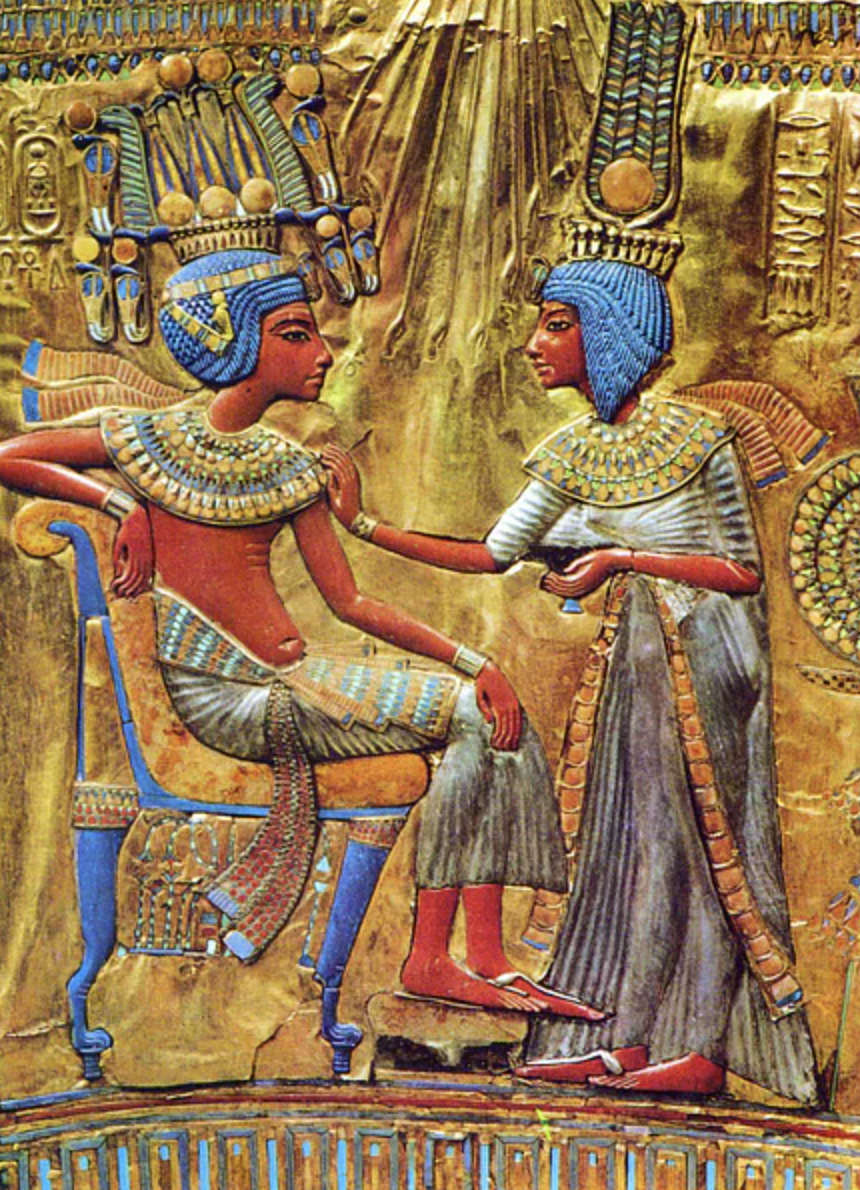 A detail from the throne of Tutankhamun which shows the pharaoh with his wife Ankhsenamun on the right. c. 1327 BCE, National Museum, Cairo.
A detail from the throne of Tutankhamun which shows the pharaoh with his wife Ankhsenamun on the right. c. 1327 BCE, National Museum, Cairo.
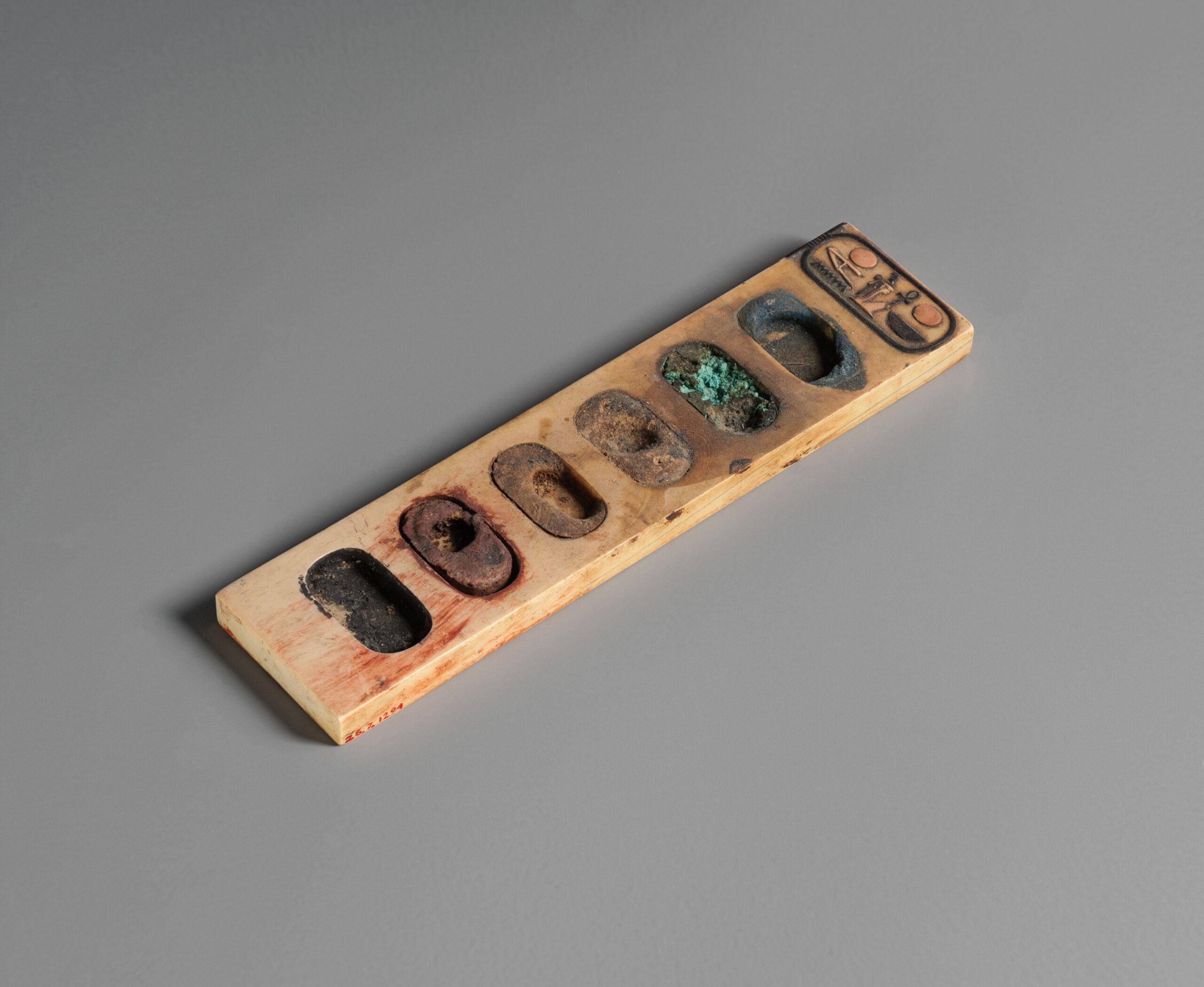 Amenemopet’s well-used artist’s palette, above, now resides in the Egyptian wing of New York City’s Metropolitan Museum of Art.
Amenemopet’s well-used artist’s palette, above, now resides in the Egyptian wing of New York City’s Metropolitan Museum of Art.
Art has pushed technology forward as artists continue to search for a broader range of hues and new materials from which they can bring their visions to life. This has been the case for thousands of years - and it remains today. In fact, here in Oregon, a team of researchers at Oregon State University discovered a new blue pigment in 2009. This is the first new blue pigment created in two centuries.
The Development of Oil Paints
Art and science are inextricably linked, one pushing the other forward alternatively for thousands of years. 64,000 years ago the first known pigments were developed to create cave paintings, and the arts have only blossomed since then.
While the development of pigments improved as societies became more global, the development of oil paints is considered one of the transformational moments in art. Before the development of oils, painters often used tempera paints. This paint is created by mixing egg yolks with pigment. Artists from ancient Egypt through the Middle Ages used tempera paints, and some Renaissance artists also used this type of paint.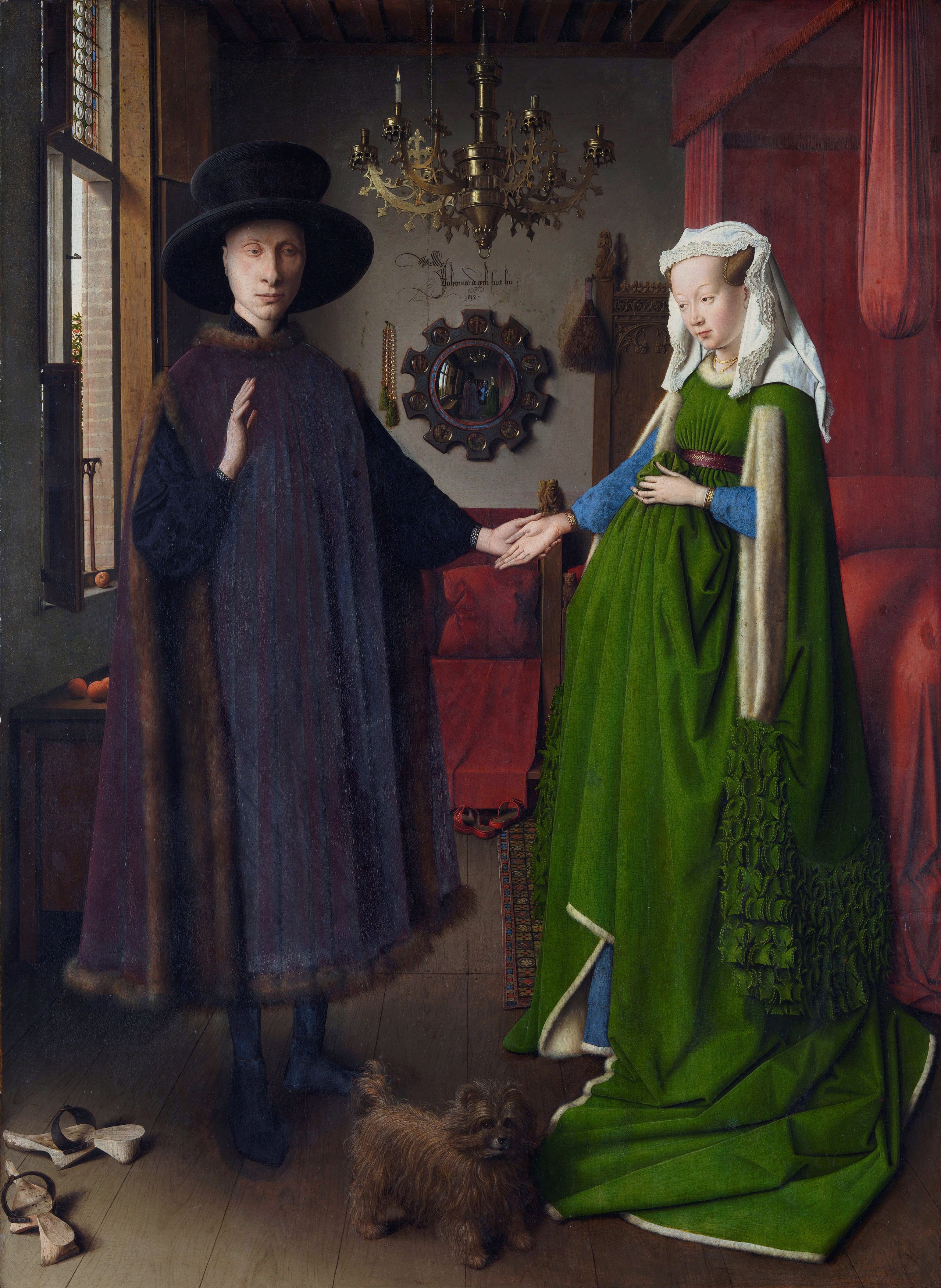 Oil paints came on the scene around the 1400s. This type of paint was essentially a mixture of pigment and oil, like linseed oil. While it is unknown who invented the first oil paint, Jan van Eyck [pictured: Arnolfini Portrait by Jan van Eyck] is credited with mastering the use of these paints and increasing their popularity. By the end of the 15th century, oils became the primary medium used. The development of oil paints was pivotal to the art world because oil paints convey a wider variety of hues than tempera paints. Tempera paints provide rich color but do not allow artists to utilize subtle tonal graduations. Additionally, oils can be built upon to create a luster absent from works using tempera paints.
Oil paints came on the scene around the 1400s. This type of paint was essentially a mixture of pigment and oil, like linseed oil. While it is unknown who invented the first oil paint, Jan van Eyck [pictured: Arnolfini Portrait by Jan van Eyck] is credited with mastering the use of these paints and increasing their popularity. By the end of the 15th century, oils became the primary medium used. The development of oil paints was pivotal to the art world because oil paints convey a wider variety of hues than tempera paints. Tempera paints provide rich color but do not allow artists to utilize subtle tonal graduations. Additionally, oils can be built upon to create a luster absent from works using tempera paints.
On top of a new medium, new pigments became available during the Renaissance. The post-dark-ages world was more open to exploration and global trade, bringing rich red pigments from The New World and ultramarine from Afghanistan and Egypt. New pigments and a new medium enabled artists to create brilliant works like Vermeer’s Girl with the Pearl Earring and Caravaggio’s The Inspiration of Saint Matthew.
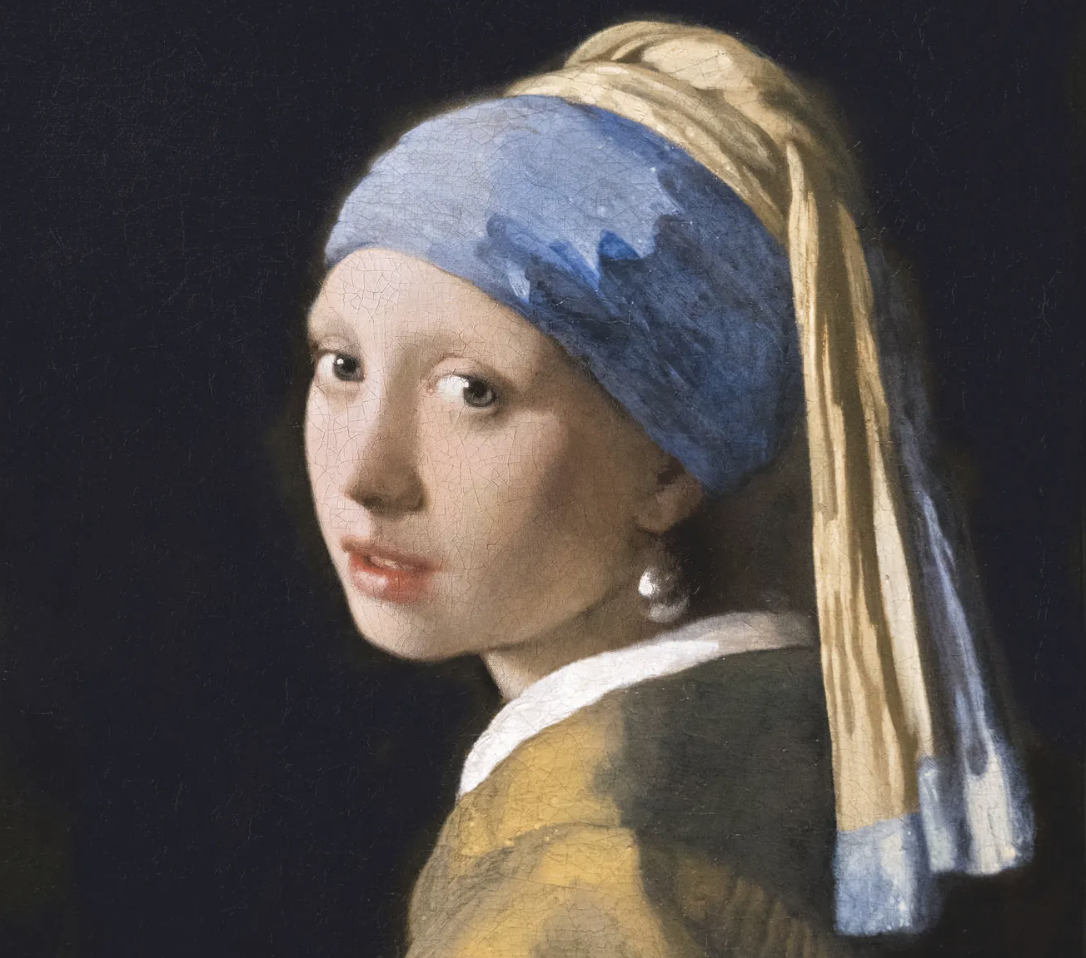 Girl with a Pearl Earring, oil on canvas by Johannes Vermeer, c. 1665; in the Mauritshuis, The Hague.
Girl with a Pearl Earring, oil on canvas by Johannes Vermeer, c. 1665; in the Mauritshuis, The Hague.
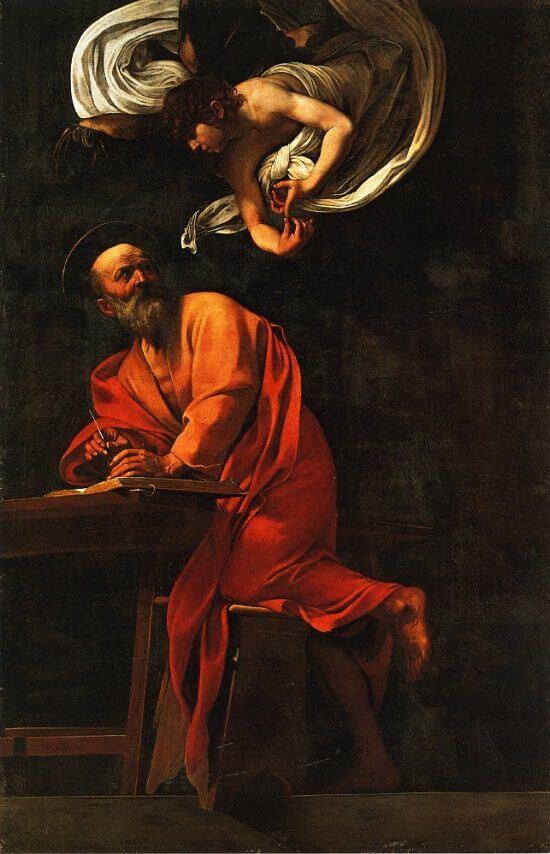 The Inspiration of Saint Matthew (1602) is a painting by the Italian Baroque master Michelangelo Merisi da Caravaggio. Commissioned by the French Cardinal Matteo Contarelli, the canvas hangs in Rome, Italy.
The Inspiration of Saint Matthew (1602) is a painting by the Italian Baroque master Michelangelo Merisi da Caravaggio. Commissioned by the French Cardinal Matteo Contarelli, the canvas hangs in Rome, Italy.
Prussian Blue - The First Synthetic Pigment
As technology advanced, scientists and artists sought new pigments. The first lab-made pigment was made both by accident - and purposefully. In the early 1700s, French chemist Jean-Baptiste Guimet was trying to make a synthetic red pigment when he accidentally created the vivid hue of Prussian Blue. This accidentally-on-purpose creation led to additional synthetic pigments designed over the next several centuries.
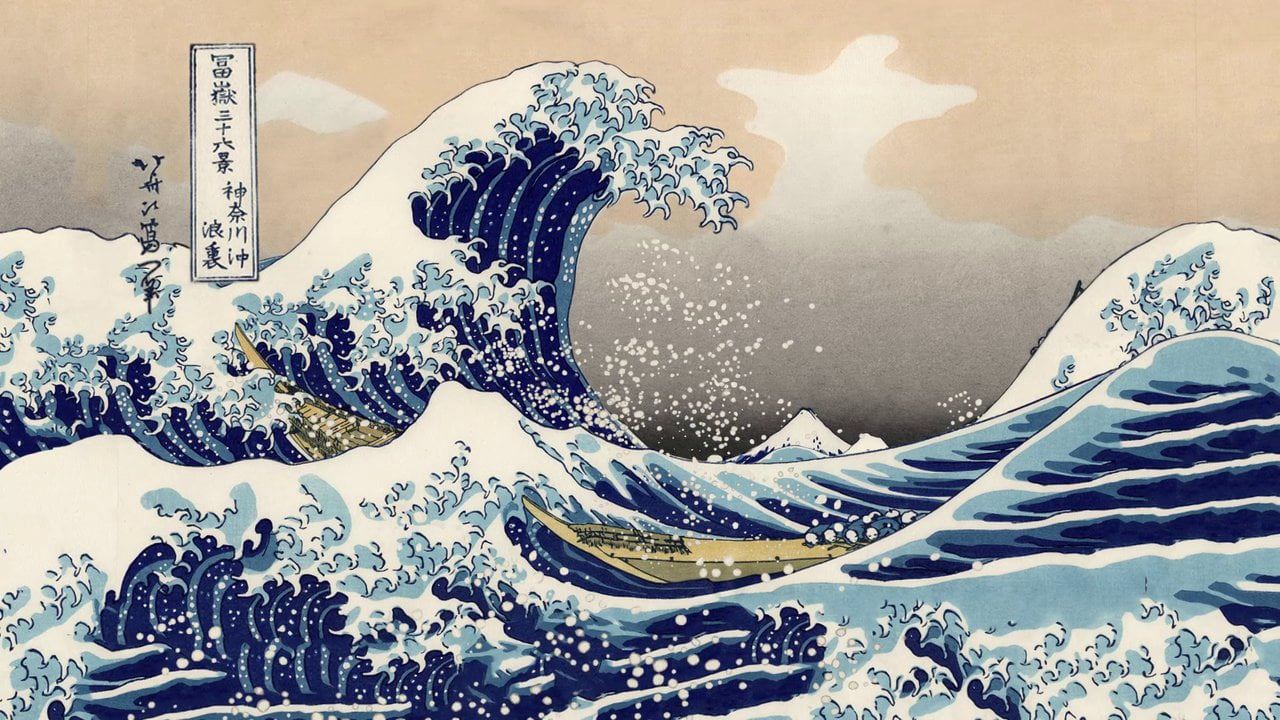 Blue arrives to Asia in the early 1800's.
Blue arrives to Asia in the early 1800's.
Katsushika Hokusai, circa 1829
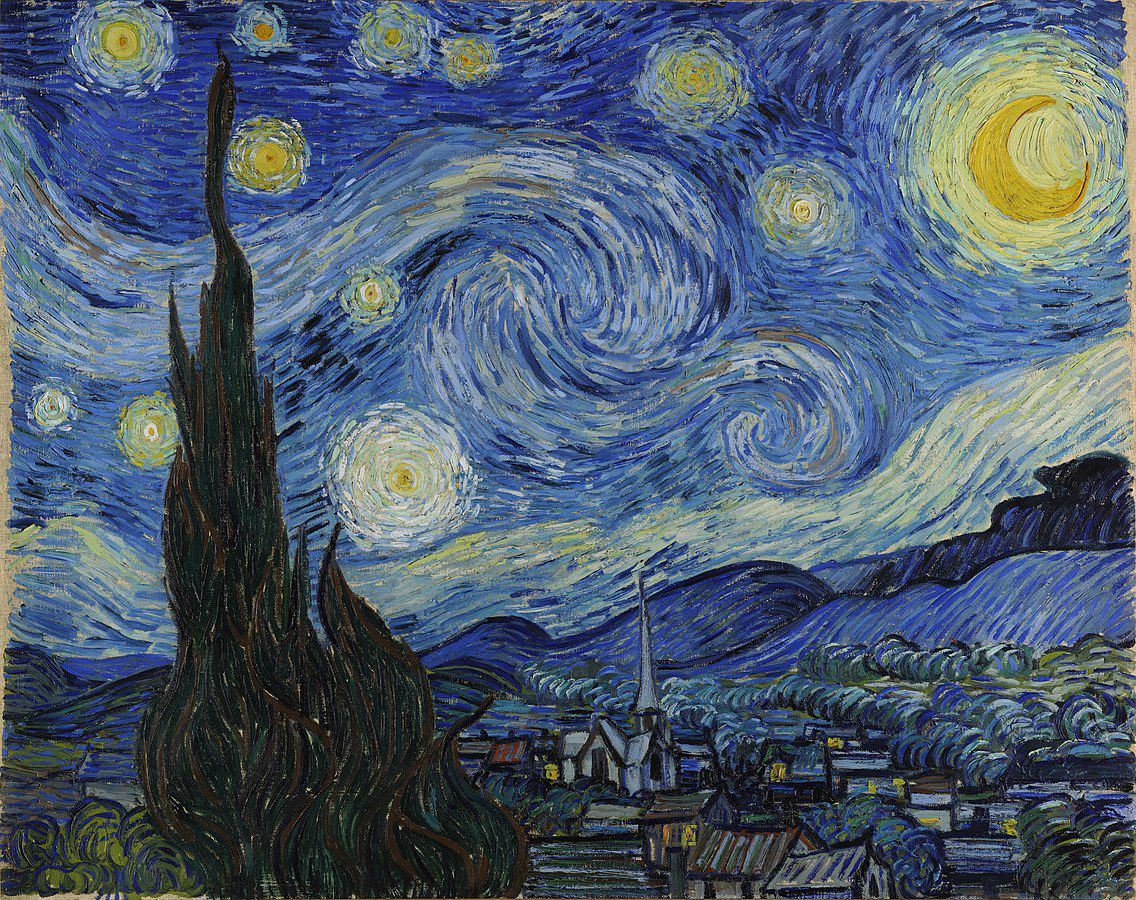 In letters to his brother, Van Gogh professed the Japanese master had left a deep emotional impact on him.
In letters to his brother, Van Gogh professed the Japanese master had left a deep emotional impact on him.
"Starry Night", van Gogh. 1889
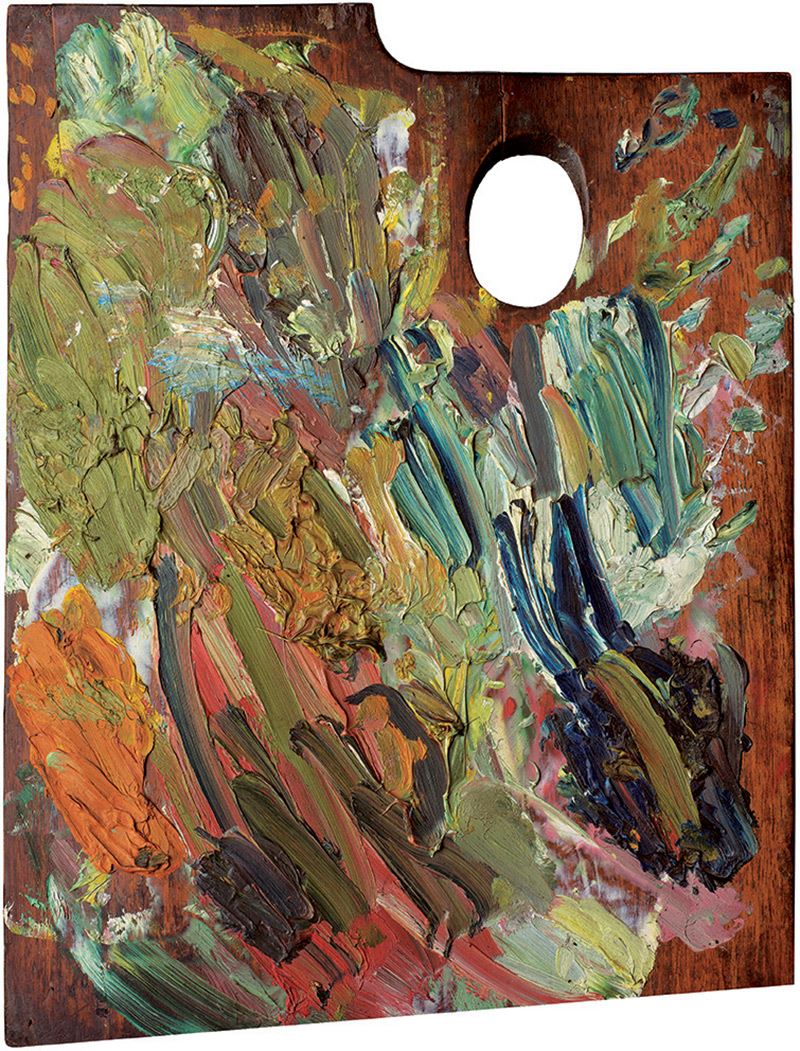 Palette of Vincent van Gogh, 2007, 190x156cm, Copyright: Matthias Schaller, Musée d’Orsay, Paris.
Palette of Vincent van Gogh, 2007, 190x156cm, Copyright: Matthias Schaller, Musée d’Orsay, Paris.
[paint palettes of famous artists]
The Downsides of Synthetic Pigments
In many ways, synthetic pigments democratized the art market. Artists were willing to go into debt or leave paintings incomplete during the Renaissance era because pigments like ultramarine were prohibitively expensive. Lab-created pigments were cheaper and, as technology advanced, could be transported more easily. For example, paint that was once transported in pig bladders could now be transported, premixed, in tin tubes.
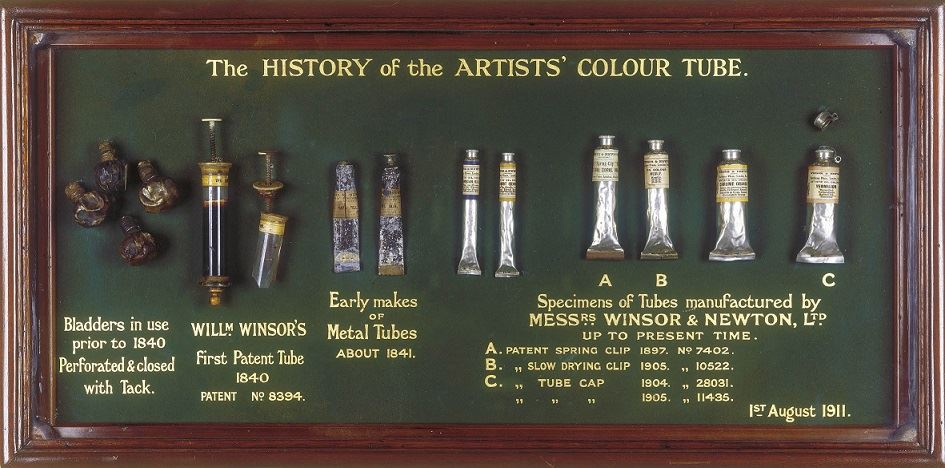 The Winsor & Newton paint tube, 1840-1911
The Winsor & Newton paint tube, 1840-1911
According to Renoir: “Without tubes of paint, there would have been no Impressionism.”
One of the big problems with the original synthetic pigments was some were highly toxic. This issue pre-dates lab-created pigments as white was created using lead and cow dung. Still, the ubiquity of new, toxic paints exposed more artists to health problems.
However, that did not stop artists like van Gogh and Monet from using the new and brilliant colors now available to them.
You have likely noticed that van Gogh favored yellow in many of his paintings. The yellow he preferred was lead-based chrome yellow. This yellow both imbued his paintings with joy, light, and beauty and likely caused debilitating illness in the painter.
Fortunately, standards in pigment production have changed over the years. We no longer use lead and other toxins in paint, which means painters can turn their vision into a reality without harming their health.
When Brilliant Pigments Meet Art
Artists across the centuries sought to bring the beauty they saw around them and the emotions deep in their souls onto the canvas, pot, stone, skein, and other media. The development of brilliant pigmentation has allowed more and more artists to do so.
When you think of great artists, you likely recollect times when they utilized brilliant pigments - or strategically used contrasts to turn a color that may traditionally be dull into something vibrant. The Mona Lisa, for example, does not use brilliant pigmentation. Still, Leonardo Da Vinci used his artistic genius to draw the viewer in with only a few colors. You may also consider hues that draw the eye to a piece, even if the overall looks relatively monochromatic. This could be said of Monet’s Waterloo Bridge, Blurred Sun.
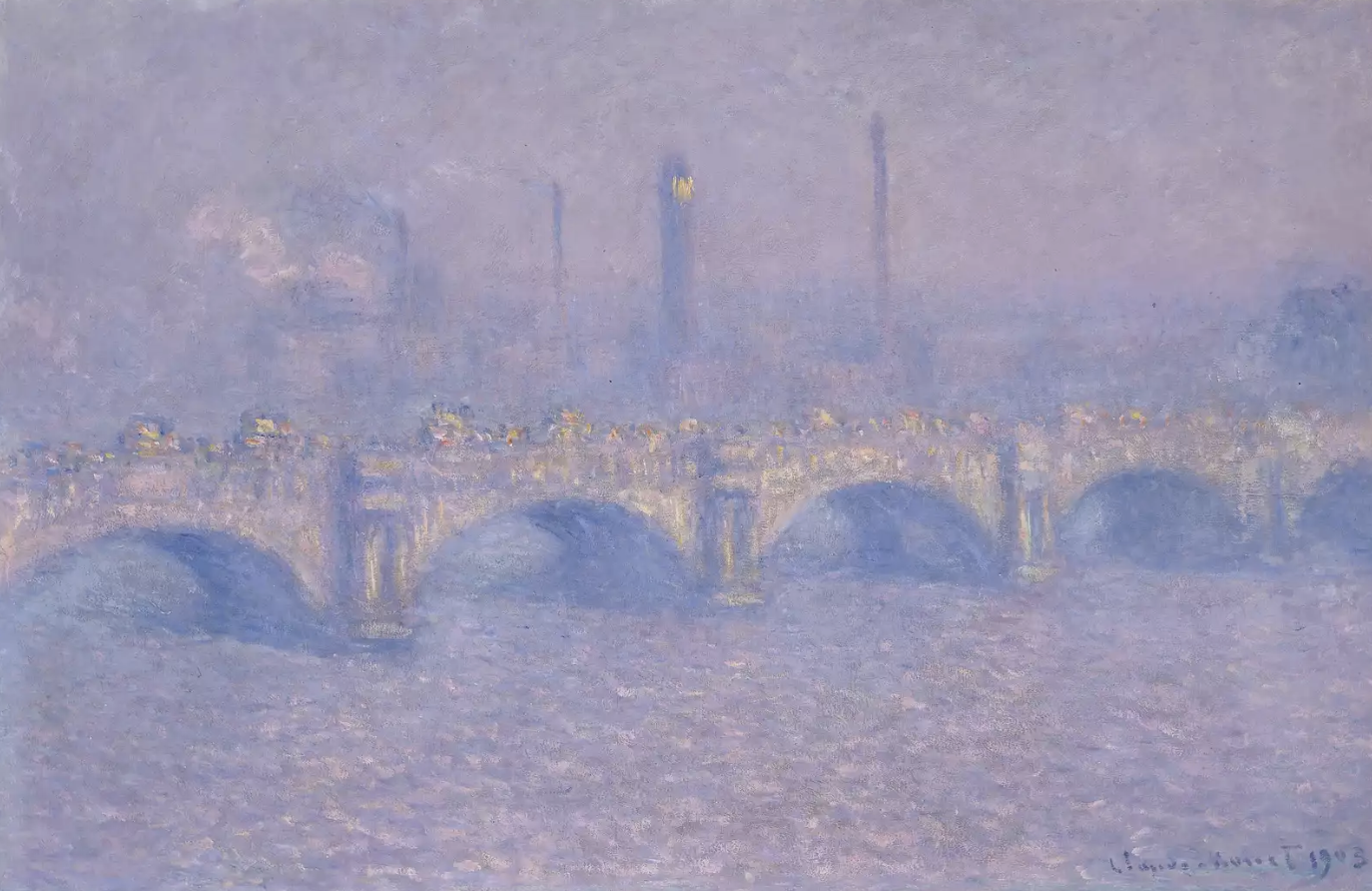 Monet’s Waterloo Bridge, Blurred Sun. 1903Some artists are known for using brilliant colors. Vincent van Gogh and Georgia O’Keefe spring to mind when one thinks of bright, vivid colors.
Monet’s Waterloo Bridge, Blurred Sun. 1903Some artists are known for using brilliant colors. Vincent van Gogh and Georgia O’Keefe spring to mind when one thinks of bright, vivid colors.
Erin Hanson’s Limited Palette
While developments in pigmentation have provided artists with a broad selection from which to choose their palette, some artists choose to limit their palette to a crucial few in order to create maximal emotional impact through color. Erin Hanson is one such artist.
Hanson’s open impressionist works are notable for utilizing pure pigments with a premixed, limited palette.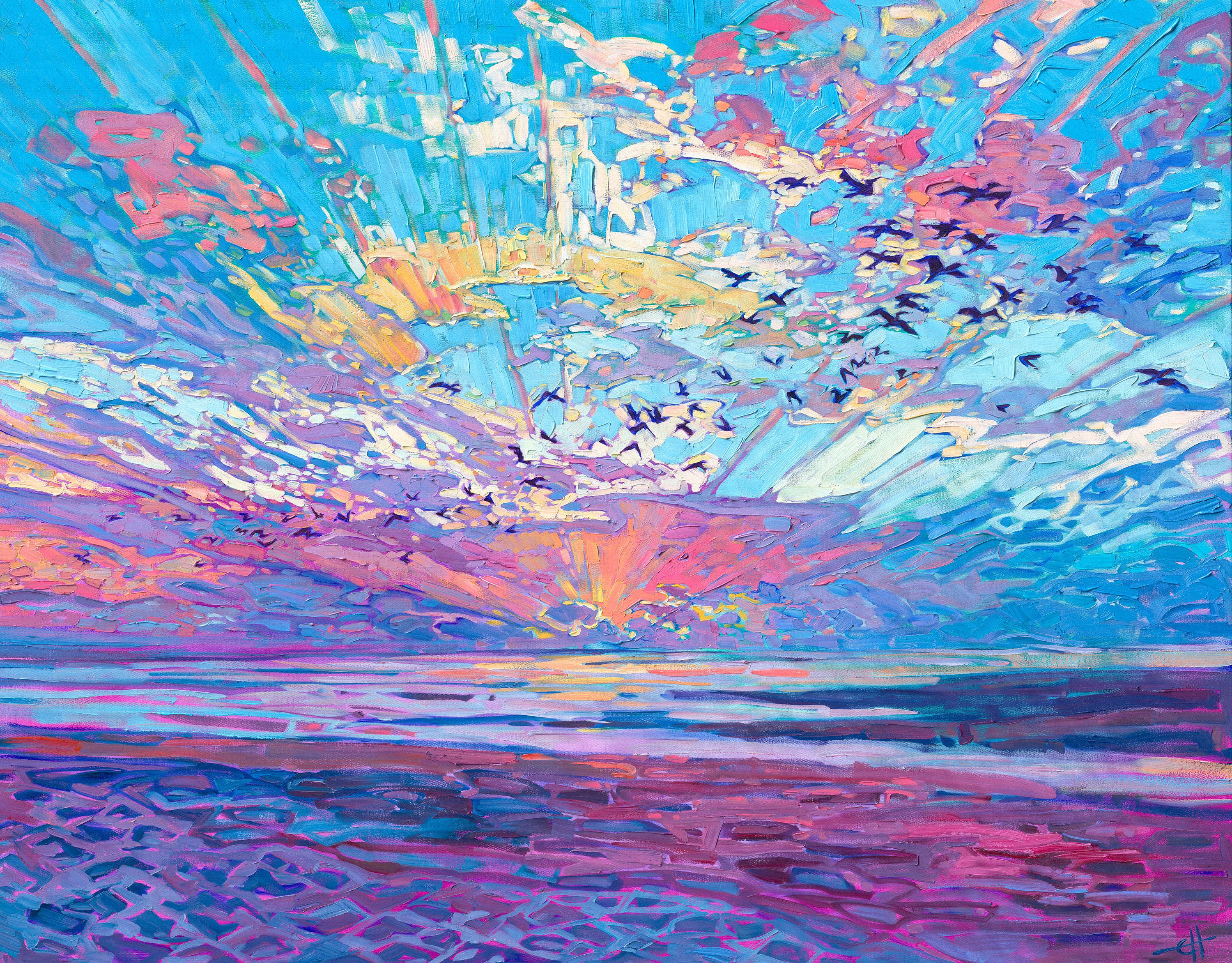 "Pelican Sky" by Erin Hanson
"Pelican Sky" by Erin Hanson
This means that Hanson only uses the colors found on the outside of the color wheel in her paintings. She selects five pure pigments, then spends hours premixing her palette (before ever picking up a brush) to create the full range of hues that will appear in the painting from warm to cold, light to dark. Once she has her palette of pigments mixed, she places brushstrokes of oil paint one next to another so that no color will get muddied by blending.
This technique of minimal layering, long strokes, and pre-mixed, pure pigments applied to canvas is quintessential to Hanson’s Open Impressionist work. The Open Impressionism movement has inspired artists around the world to take up the brush or palette knife and create vibrant works of art, flooding the world with wonderful shades of color.
Explore art that uses vivid hues with a limited palette. Enjoy Erin Hanson’s landscapes here.
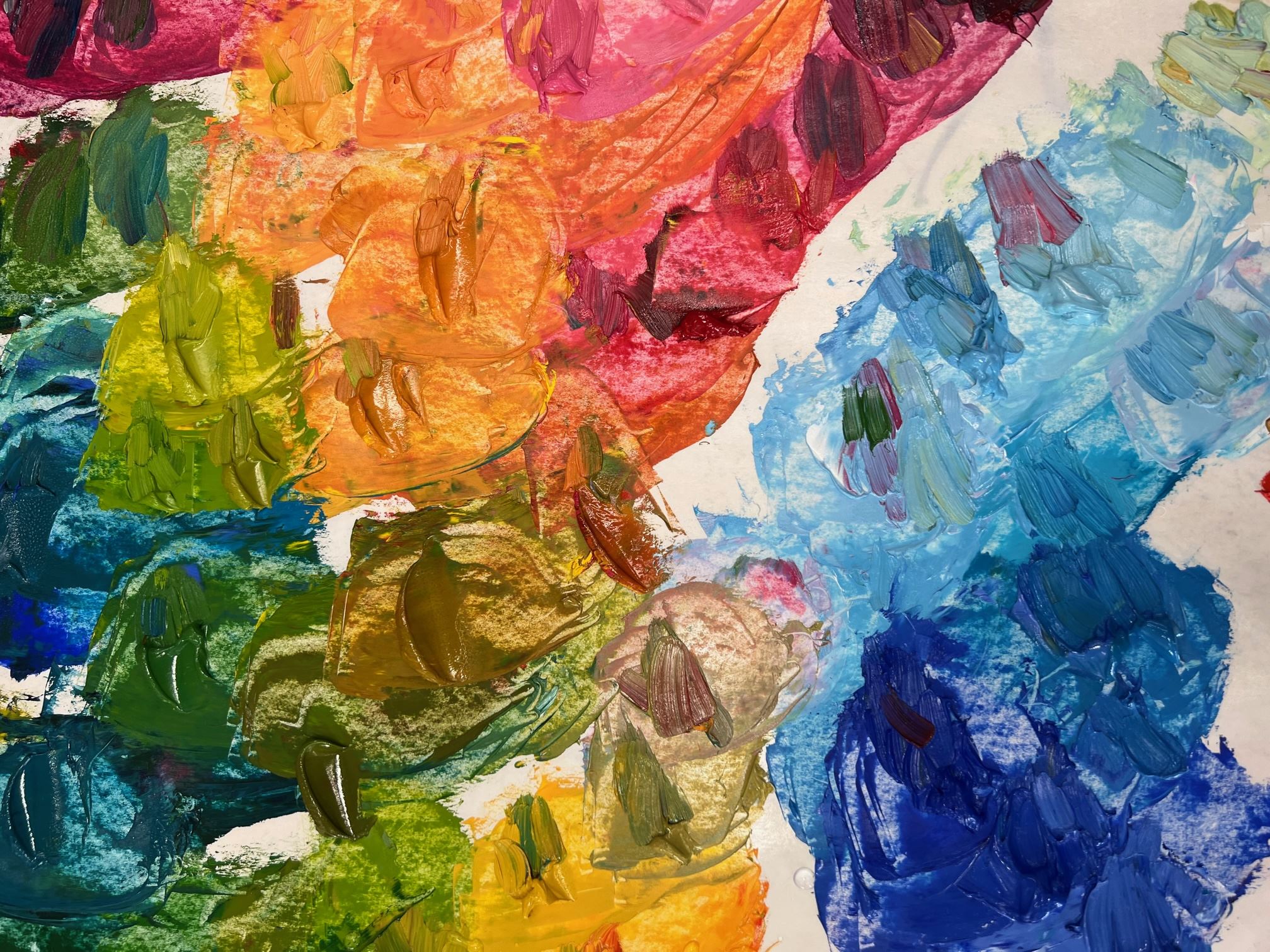 An Erin Hanson palette, 2022.
An Erin Hanson palette, 2022.
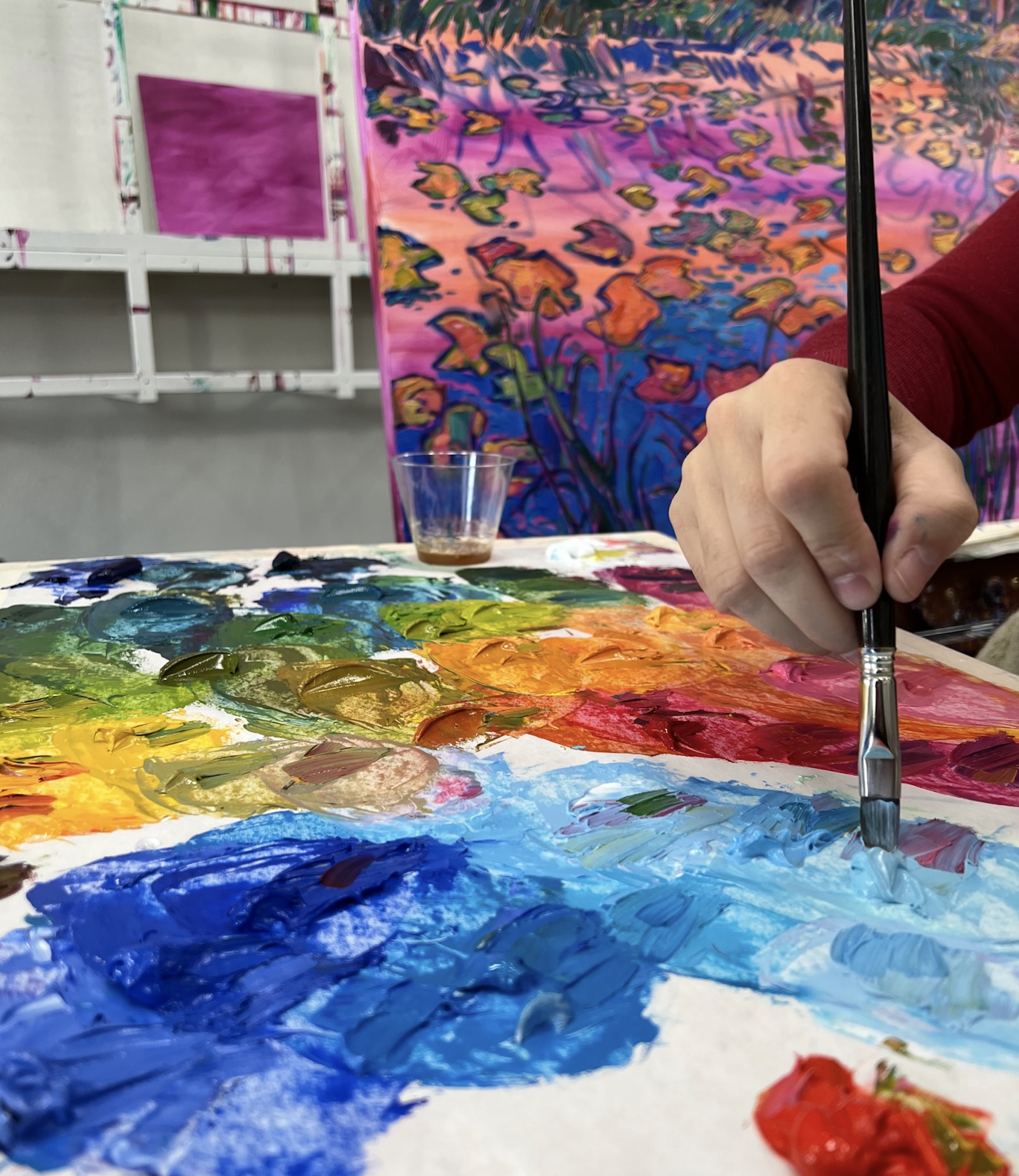 Erin Hanson in her studio, 2022.
Erin Hanson in her studio, 2022.
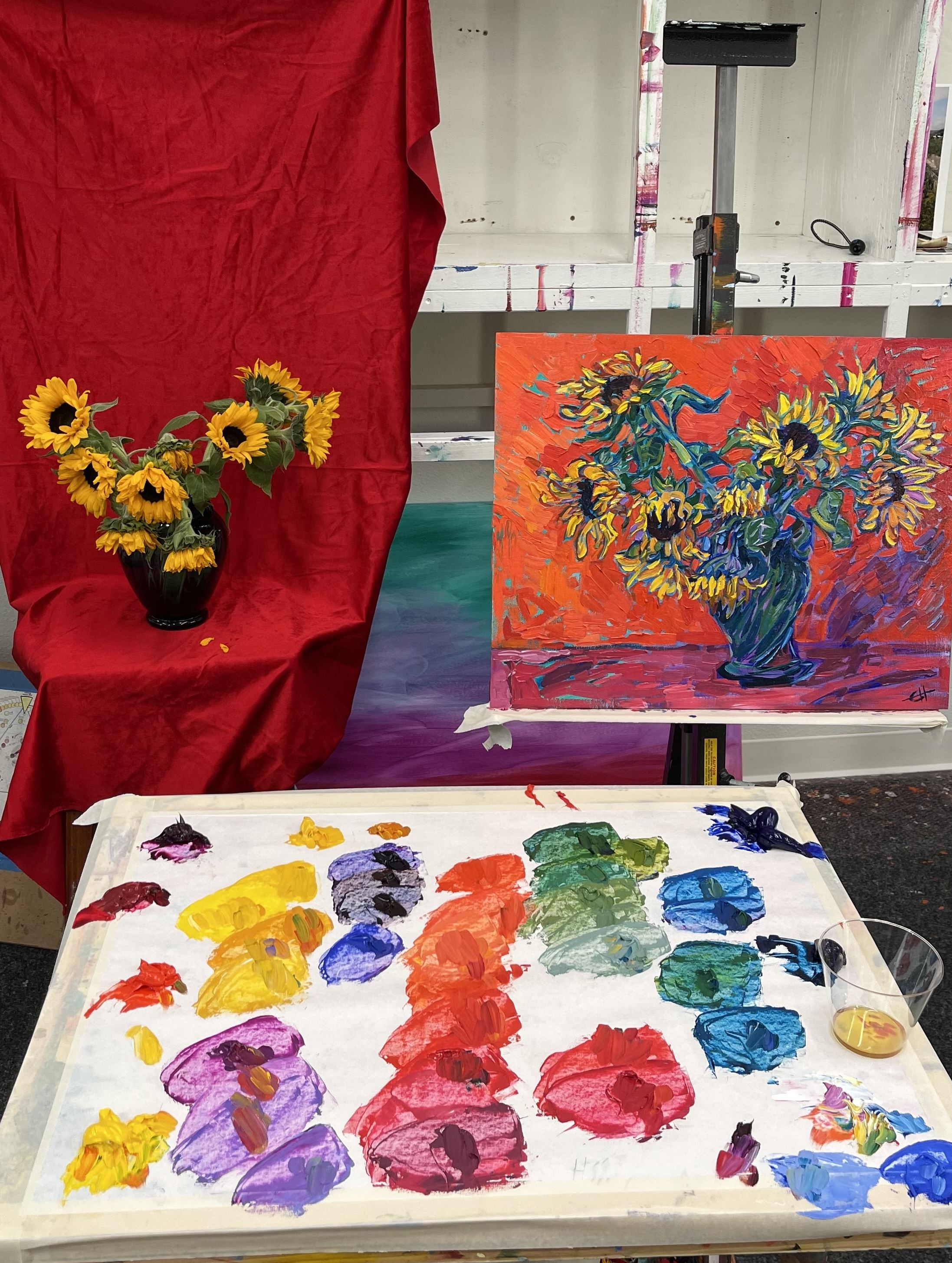 Erin Hanson's studio, 2022.
Erin Hanson's studio, 2022.
Sources:
https://www.artsy.net/article/the-art-genome-project-a-brief-history-of-color-in-art#:~:text=Artists%20invented%20the%20first%20pigments,brown%2C%20black%2C%20and%20white
https://mymodernmet.com/yinmn-blue-paint-for-sale/
https://mymodernmet.com/history-of-paint/
https://dailyhistory.org/When_did_oil_paints_become_popular
https://mymodernmet.com/ancient-egyptian-painters-palette/
Discover the artist at the forefront of modern impressionism.
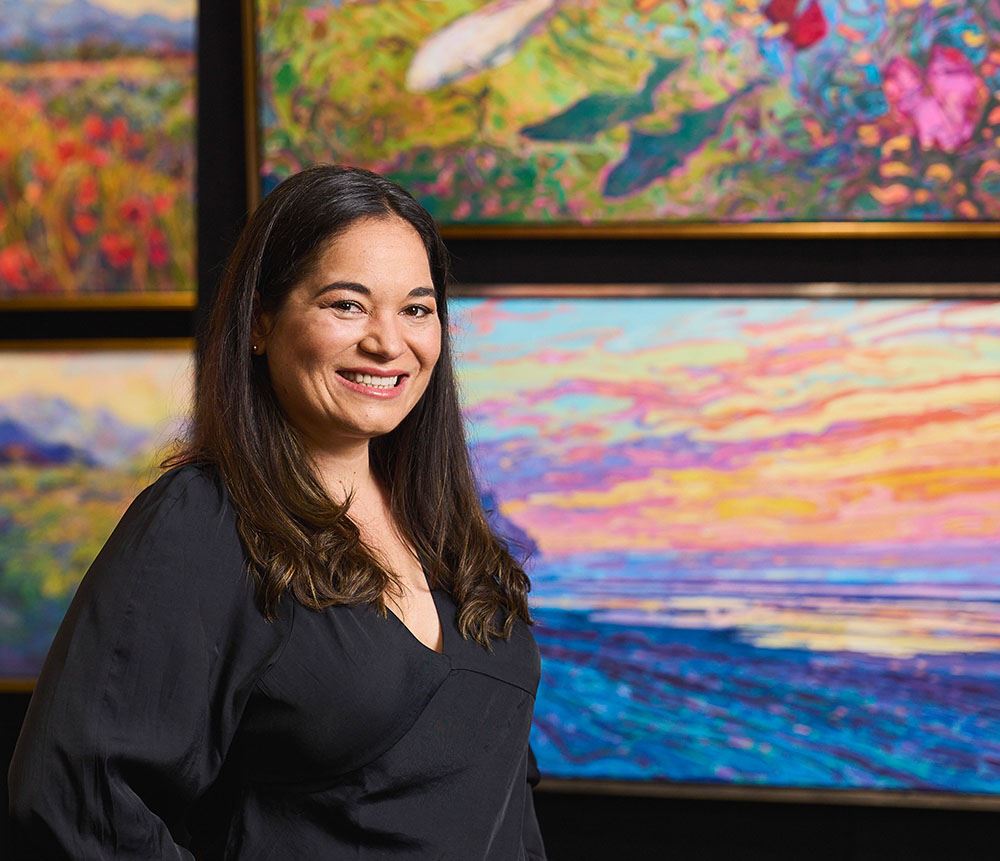
About Erin
ERIN HANSON has been painting in oils since she was 8 years old. As a teenager, she apprenticed at a mural studio where she worked on 40-foot-long paintings while selling art commissions on the side. After being told it was too hard to make a living as an artist, she got her degree in Bioengineering from UC Berkeley. Afterward, Erin became a rock climber at Red Rock Canyon, Nevada. Inspired by the colorful scenery she was climbing, she decided to return to her love of painting and create one new painting every week.
She has stuck to that decision, becoming one of the most prolific artists in history, with over 3,000 oil paintings sold to eager collectors. Erin Hanson’s style is known as "Open Impressionism" and is taught in art schools worldwide. With millions of followers, Hanson has become an iconic, driving force in the rebirth of impressionism, inspiring thousands of other artists to pick up the brush.